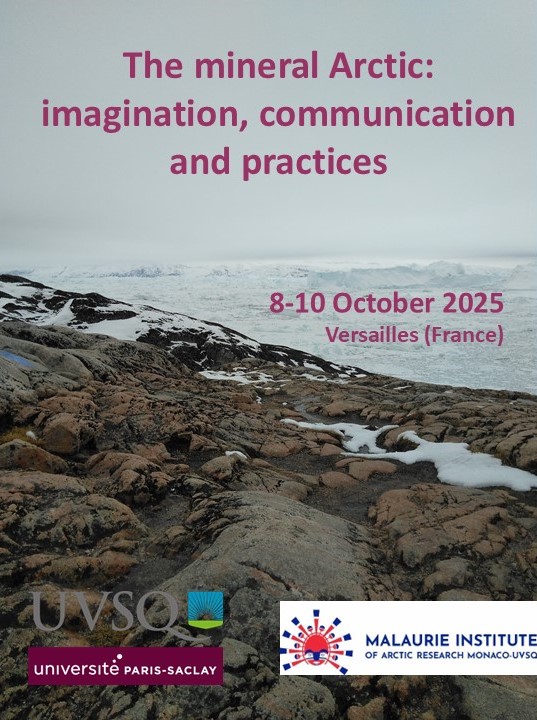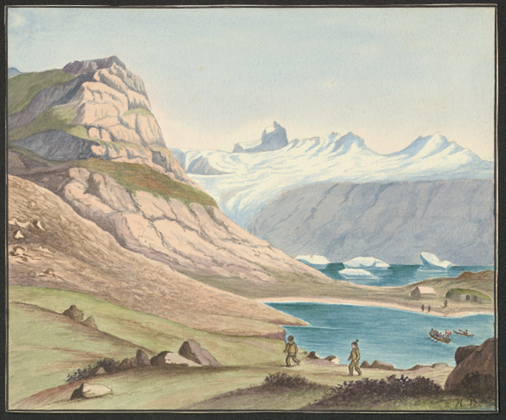The Malaurie Institute of Arctic Research Monaco-UVSQ (MIARC) is organising an international and interdisciplinary conference “The mineral Arctic: imagination, communication and practices” in association with UArctic Thematic Network Arctic Cultures and History (ARCH) and UArctic Regional Centre for Continental Europe at UVSQ in Versailles on 8-10 Octobre 2025.

Many different images of the Arctic have been disseminated in Europe since ancient times. From the earliest voyages and whaling to scientific expeditions, more and more eyewitness knowledge was produced and communicated in a variety of contexts and languages. Based on early, not always reliable travel reports, the geographical works of the early 18th century in particular created an idea of the ‘empty’ Arctic, which was based on different power and communication structures in Europe. In this context STONES and mineral environments were often instrumentalized to epitomize this emptiness.
The Malaurie Institute of Arctic Research Monaco-UVSQ would like to propose a reflection on stones in the Arctic inspired by the works of its co-founder Prof. Jean Malaurie (1922-2024) and the title of his memoirs De la pierre à l'âme [From stone to soul] within the field of Arctic Humanities. STONES and the MINERAL ARCTIC will serve as an object of research and source of inspiration for discussing the diversity of entities represented by colors, mineral constitution, weight, hard or porose surface, forms and shapes as well as structures and their mental representations. Aspects of particular interest include changes, continuities, demarcations, overlapping, entanglements, inclusion or exclusion, connection and disconnections.
The conference is dedicated to the (non)materiality of STONES and ROCKS, which is understood both as an idea and a resource, as the epitome of emptiness and fullness, from Antiquity until the long 19th century. The principal focus will be on musings about and imaginations, images and attributions of meaning to Arctic stones, rocks and mineral environments in text and visual media, in the arts and crafts, communication about resources, religious practices, colonial economic profit or practices of knowledge production, collecting and structuring, trade and production of commodities and remedies.
To enquire into the imaginations, communication and practices of the mineral Arctic, understood as materiality and idea, means not only considering the human-nature relationship, but also enquiring into the processes of reinterpretation of materiality in cultural thought patterns. Both indigenous views and the European or American perspective on processes and structures that created discourses on the mineral Arctic and chose STONES as an object of reflections will be discussed here. Using minerals as a figure of thought and resource, the history of circumpolar Arctic images that emerged in the negotiations between the European and the Indigenous peoples’ worldview will be the core issue. Attention will notably paid to communication processes, cultural negotiation processes, the colonial constitution of power relations, representation practices in art, definitions of mental loyalties, the emergence of geographical imaginations, indigenous and European constructions of space and processes of scientific and indigenous knowledge production.
Possible topics could include:
- The mineral Arctic as an idea in philosophy, indigenous belief systems and the Christian religion brought into the Arctic by missionaries, as well as interrelationships between the three domains
- The mineral Arctic as a projection surface for European values and ideas, e.g. freedom, the Christian plan of creation, symmetry
- Culturally created ideas of nature, here the stones or mountains as an obstacle or protection, as a physical or mental boundary or space defined by it
- Representations of stones or mountains in travel literature from the Arctic and literature from and about the Arctic
- visual representations of the mineral Arctic in pictures, paintings, art or crafts
- the significance of stones in indigenous oral history
- the significance of stones in scholarly discourses, including geography, mineralogy, curiosity cabinets and natural history cabinets
- Stones as construction material in the Arctic
- Stones as an idea in medical discourses and as a remedy for European patients
- the mineral Arctic and the colonial economy and political claims to power
- Stones and indigenous knowledge - building techniques, hunting, everyday practices
- Stones as a source of political conflicts
We invite contributions examining these or other aspects connected to research within the frame of the Arctic Humanities (human and social science). The working language of the conference is English.
If you are interested in participating, please send an abstract of no more than 300 words, accompanied by a short biographical sketch until January 15th, 2025 to Dr Joanna Kodzik, Junior Full Professor at MIARC, scientific coordinator of the conference:

Ikigait (Greenland)
© Moravian Archives Herrnhut (Germany)

